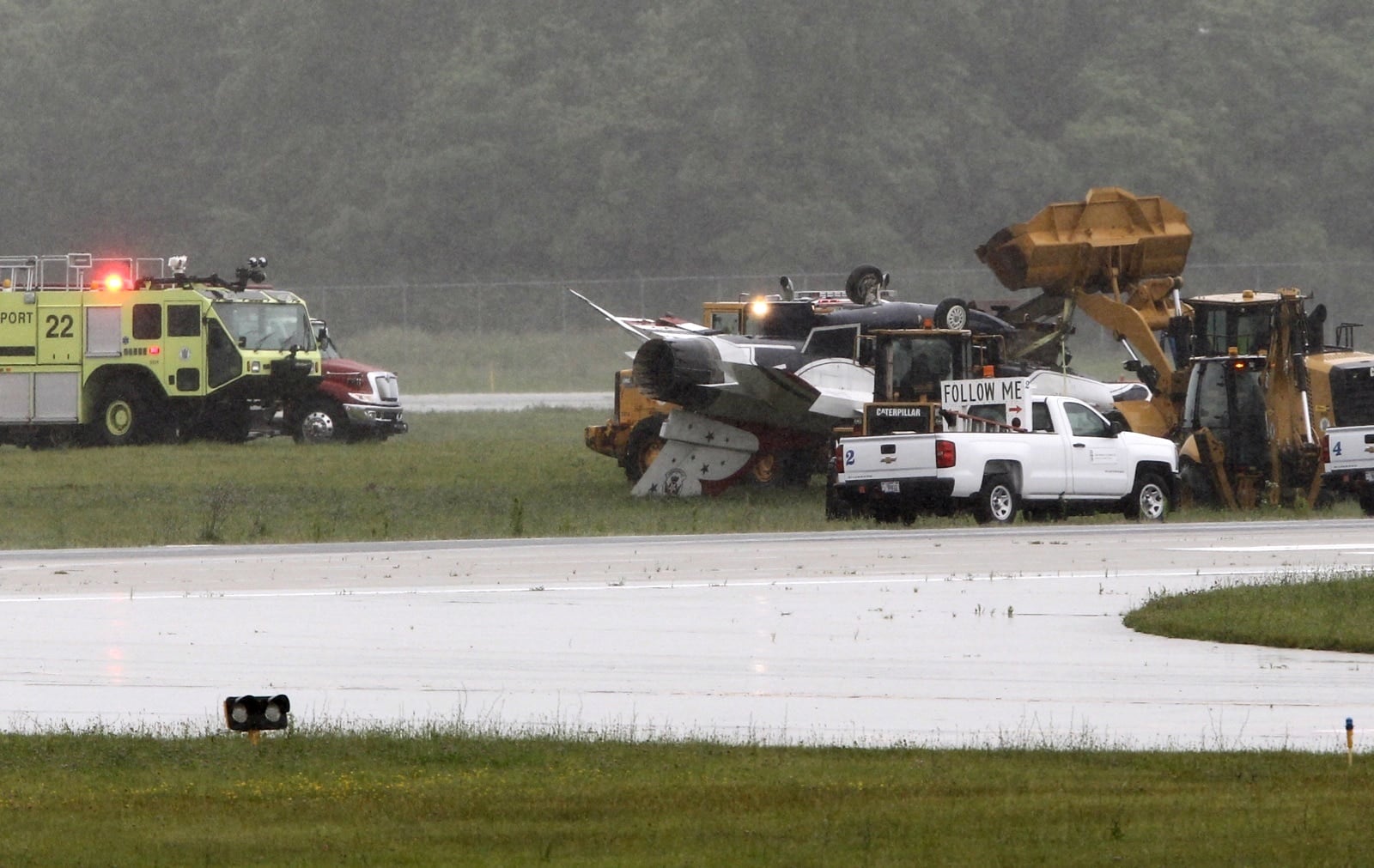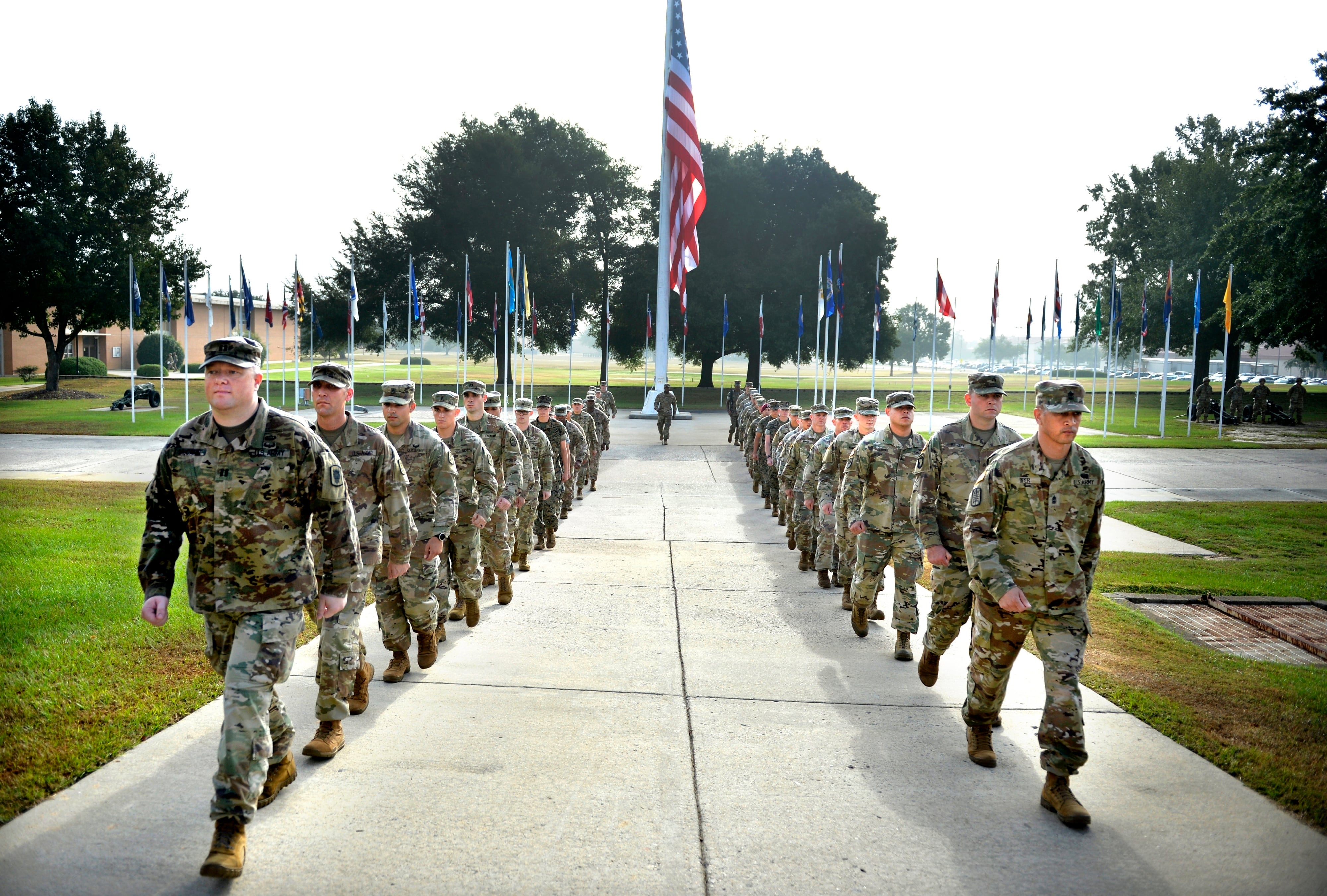A Thunderbirds F-16D crashed in June when it landed too fast, skidded off a wet runway and overturned in the grass, injuring the pilot, according to an Accident Investigation Board report released Friday.
The two-seater Fighting Falcon, from the Air Force Air Demonstration Squadron at Nellis Air Force Base’s 57th Wing in Nevada, was conducting a single-ship familiarization flight when the crash happened June 23 at the Dayton International Airport in Ohio. The $29 million fighter was destroyed.
The conditions were bad at the airport, with heavy rain, mist, and winds gusting to 20 knots, the report said. Visibility was at 1 1/2 miles.
The F-16 should have made the approach to the runway at 150 knots and slowed down to 138 knots by the time it touched down, the report said. Instead, the pilot, Capt. Erik Gonsalves, flew at more than 190 knots for the first 2,000 feet of the 10,901-foot runway, throttled down late, and touched down at 163 knots, well above the recommended speed.
The F-16 would have needed between 7,000 and 8,000 feet to stop on a wet runway, according to computer models, the report said. But Gonsalves touched down with 6,137 feet of runway left.
The poor weather caused Gonsalves to lose his situational awareness and substantially contributed to the crash, the report said. He missed his first landing approach because standing water on the canopy left him unable to see the runway. The water also blurred his heads-up display, or HUD, leaving it unusable on the first approach and forcing him to switch to only using his cockpit instruments.
He had the same problems with water on the canopy on the second and final approach, and was also dealing with crosswinds. This forced him to pay more attention on navigating to the runway, and less time on aircraft parameters such as airspeed, touchdown distance and stopping distance, which he misjudged. He had enough fuel to go to an alternate field, the report said, but did not.
RELATED

Gonsalves also did not follow the correct braking procedure, the report said. When landing on a wet runway, a pilot is supposed to maintain full aft stick, fully open the speedbrakes, and apply maximum wheel braking after the nosewheel is on the runway.
Instead, the report said the flight data showed Gonsalves unintentionally applied forward pressure on the stick beginning at 21 seconds, which slowed the deceleration and meant the plane needed more distance to stop. There was no data showing whether the speedbrakes were properly opened, though Gonsalves said he opened them before landing.
“Had the [pilot] applied proper braking procedures throughout the landing roll, the probability of the [plane] departing the overrun and overturning would have been reduced,” the report said.
After the plane skidded off the overrun, its nose landing gear collapsed and the right wing tip dug into the grass, flipping the plane over, the report said.
Gonsalves was injured in the crash, and the other crew member was uninjured. Air Combat Command said in an email that he is still traveling with the Thunderbirds team and narrating shows, but is not medically cleared to fly. Citing the Privacy Act, ACC would not say whether he is facing disciplinary action.
Stephen Losey is the air warfare reporter for Defense News. He previously covered leadership and personnel issues at Air Force Times, and the Pentagon, special operations and air warfare at Military.com. He has traveled to the Middle East to cover U.S. Air Force operations.





